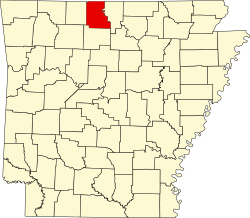Education

Public education is available from the Ozark Mountain School District that includes Bruno-Pyatt Elementary School and Ozark Mountain High School. The latter is located in the former Western Grove High School, which consolidated into Ozark Mountain High in 2023. [4]
The Bruno-Pyatt School was created in 1974 as a consolidation of schools in Bruno and Pyatt. [5] On July 1, 2004, the former Bruno-Pyatt School District consolidated into the Ozark Mountain School District. [6] The consolidated district operated Bruno–Pyatt High School until 2023, when it consolidated into Ozark Mountain High School. [4]
